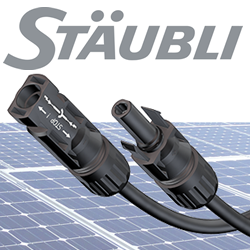The main purpose for developing the Thermo Life is to provide energy harvesting for low-power applications where other technologies would prove inadequate or not possible.
Micro Thermoelectric Generator Targets ZigBee
Marc Poulshock | Thermo Life Energy Corp.
| The main purpose for developing the Thermo Life is to provide energy harvesting for low-power applications where other technologies would prove inadequate or not possible. |
| Micro Thermoelectric Generator Targets ZigBee |
| Marc Poulshock, Thermo Life® Energy Corp. |
|
The Thermo Life micro thermoelectric generator under development at
Thermo Life Energy Corp. possesses the unique ability to develop small
but usable power levels from temperature differences as low as 5°C.
Dr. Ingo Stark, CTO of Thermo Life Energy and inventor of the Thermo Life low power thermoelectric generator, explained that the device operates on the Seebeck effect used by other thermoelectric generators, such as thermopiles, to generate electricity from differences in temperature. However, the Thermo Life is implemented as 5074 thermocouple junctions connected electrically in series within a single disk-shaped package about half the diameter of a penny and roughly the same thickness. Working voltages can thus be developed at much lower temperature differences. The absolute temperature values are also lower, allowing operation between a 25°C-source and a 30°C-source, for example.
The Thevenin impedance of the latest Thermo Life unit is approximately 86 kΩ, and the device can drive a current of 36 μA at 3.1 V into a matching load when the difference between the applied temperatures is only 5°C. This results in 111 μW of electricity for that condition. According to Stark, because the thermoelectric voltage for the device is proportional to the temperature difference, while the output resistance remains relatively constant for lower temperatures, the available power increases with the square of the temperature difference. However, the Thermo Life is not intended to serve as a primary power component that would compete with more mature products such as batteries or solar cells, though novelty applications, such as a thermally powered wristwatch, are certainly possible. Rather, as stated by Poulshock, the main purpose for developing the Thermo Life is to provide energy harvesting for low-power applications where other technologies would prove inadequate or not possible. Because the ZigBee specification will require low power (operating up to several years on conventional batteries) and low cost (eventual BOM of $3.00 for total solution) by design, and is poised for widespread adaptation, it will be the most attractive immediate application for Thermo Life technology. Delivery of the new Thermo Life device to advance customers is
expected later this year or early in 2007. Manufacturing agreements for
general mass production are in progress. The ZigBee specification is
available for download under conditions of the user agreement at
www.ZigBee.org. For more information about the Thermo Life and the physics behind it, visit Thermo Life Energy's web site (www.poweredbythermolife.com). |
|
The content & opinions in this article are the author’s and do not necessarily represent the views of AltEnergyMag
Comments (0)
This post does not have any comments. Be the first to leave a comment below.
Featured Product


 While
the potential applications are virtually unlimited, Thermo Life Energy
has been acquired by Applied Digital (NASDAQ: ADSX) as part of a
strategy to develop an energy-harvesting capability for wireless
devices, particularly sensors based on the ZigBee specification, according
to Marc Poulshock, President of Thermo Life Energy Corp.
While
the potential applications are virtually unlimited, Thermo Life Energy
has been acquired by Applied Digital (NASDAQ: ADSX) as part of a
strategy to develop an energy-harvesting capability for wireless
devices, particularly sensors based on the ZigBee specification, according
to Marc Poulshock, President of Thermo Life Energy Corp. 